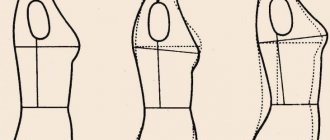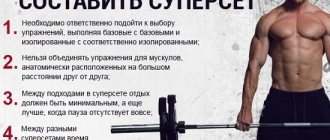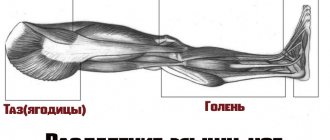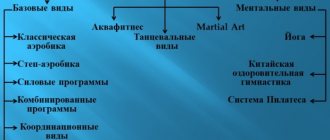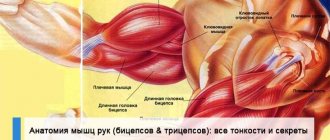Training to failure, muscle failure, muscle failure are different expressions that mean the same thing. “This is a type of training used in bodybuilding, and literally means the inability to continue doing the exercise,” says X- group programs in Russia . In fact, failure is the degree of muscle fatigue at which you can no longer perform an exercise with proper technique. For example, you were squatting and can no longer stand up as expected, straightening both legs at the same time. You may do another repetition if you straighten one first, or tilt your body, that is, break the technique.
Why is this happening?
“Muscle failure can be due to both the capabilities of muscle tissue and fatigue of the nervous system,” explains Yulia Malenchuk. Either way, the result is the same: the muscle fibers can no longer contract.
Let us recall that they consist of so-called actin-myosin bridges. Actins and myosins are two types of muscle fibers, arranged in pairs. When actin clings to myosin, the muscle contracts; when it disengages, it relaxes. When the coupling-disengagement of this bridge stops, this is muscle failure.
In this case, as is easy to understand, actin-myosin bridges can stop either in a linked or uncoupled form. It turns out that for sports purposes you need such a muscle failure, in which the bridges freeze in the coupled state.
conclusions
- Muscle failure is a clear criterion for the muscles to reach fatigue during the exercise. However, working on the verge of failure (for 1-2 repetitions) is also effective if the athlete is able to feel this edge.
- Failures should be avoided or limited if they interfere with the planned volume of load in training or within a microcycle.
- It is not advisable to reach failure in exercises where it can lead to loss of control over the weight.
- Overall, as sports scientist, coach and trainer Greg Nuckols puts it, “Failure and near failure are just one more variable, along with volume, intensity, etc., that can be manipulated in your training.”
Attention. Materials posted in the section may be published in whole or in part only with the obligatory indication of the source of the publication.
Why is refusal training necessary?
“Training to failure is used by athletes to achieve maximum muscle hypertrophy,” says Yulia Malenchuk. — The mechanism is as follows: our muscles work in conjunction with the nervous system, so they are traditionally considered together. The structural unit of the neuromuscular system is called a motor unit and consists of a motor neuron and the muscle fibers that it innervates. During low-intensity work, not all motor units are involved, but only small ones that are easily excitable and contain few muscle fibers. Working to failure allows you to engage all muscle fibers, including the largest ones.”
Arrest, in which actin-myosin bridges are linked, provides the first condition for muscle growth - microtrauma of muscle fibers, which causes muscle recovery and hypertrophy. As well as their recovery, which appears during the training process. This result is achieved by classic powerlifting and bodybuilding exercises, when sets of 6-12 repetitions are done with relatively large weights, each approach taking 30-40 seconds.
And holding the bridges in the disengaged state does not lead to muscle growth and occurs when doing sets of more than 12-15 repetitions of exercises.
Muscle failure[edit | edit code]
Muscle failure
is a condition in which an athlete is unable to perform a single additional repetition with correct technique.
There are three types of muscle failure:
- positive (concentric) – lifting the projectile;
- negative (eccentric) – lowering the weight;
- static (isometric) – holding the projectile.
These three types of muscle failure are related to muscle fiber types:
- Concentric
– affects myofibrils (when lifting weights, the number of muscle myofibrils decreases). It is thanks to myofibrils (when they contract) that muscles increase in circumference. Research has shown that the best results when working with myofibrils can be achieved by working to muscle failure with a weight of 4-6 repetitions; - Isometric
– corresponds to intermediate failure (both types of fibers are involved), when the glycogen depot is depleted and there are no more “fast energy” reserves. Research has shown that the best results (increased muscle strength, size and endurance) when working with this type of failure can be achieved by training with weights of 12-15 repetitions; - Eccentric
- affects mitochondria attached to myofibrils. Mitochondria produce the energy that muscles use to contract and repair themselves. This failure occurs when all possible energy reserves are depleted, but the muscle is not damaged. Contraction stops when lactic acid lactate begins to form. By working in the 20-25 rep range (i.e. fairly light weights but high reps), you will build greater endurance in your muscles.
Training to failure: pros and cons
There are serious arguments for both points of view. “The largest muscles are the last to be involved in work,” says Yulia Malenchuk, “and refusal to exercise allows you to fully load them. As you know, it is the load that is the main factor in muscle growth, since it stimulates the production of anabolic hormones.”
Let us remind you that for a good result in gaining muscle mass you need to increase testosterone and growth hormone. Their growth is observed from the first minutes of training. Moreover, the more intense the workout, the higher the level of hormones becomes. It is the intensity that is important, that is, a high heart rate, but the duration and number of exercises do not in any way affect the production of growth hormone.
“Also, refusal training has a psychological effect,” says Yulia Malenchuk. “The psyche gets used to very hard work, and this can be useful, for example, in competitions.”
Some physiologists oppose this training method, believing that it overloads the central nervous system. Let us remind you that it is she who activates motor neurons during movement. During failure training, the nervous system has to fire more and more motor neurons at the same time, which is too taxing for it. And if the muscles recover after such fatigue, the nervous tissue cannot do this. However, this argument only says that you cannot do training where all approaches are performed to failure.
Sources[edit | edit code]
- Izquierdo M, Ibañez J, González-Badillo JJ, Hakkinen K, Ratamess NA, Kraemer WJ, French DN, Eslava J, Altadill A, Asiain X, Gorostiaga EM. Differences in the effects of strength training leading to muscle failure versus training not to failure on hormonal response, strength performance, and muscle mass gain. J Appl Physiol. May 2006; 100(5): 1647-56.
- Gorostiaga EM, Navarro-Amezqueta I, Calbet JA, Hellsten Y, Cusso R, Guerrero M, Granados C, Gonzalez-Izal M, Ibanez J, & Izquierdo M. Energy metabolism during repeated sets of the platform leg press with and without failure. PloS One. 2012; 7(7): e40621.
- Schoenfeld BJ. Potential mechanisms and role of metabolic stress in hypertrophic adaptation to resistance training. Sports Med. 2013 Mar;43(3):179-94.
- Drinkwater EJ, Lawton TW, Lindsell RP, Pyne DB, Hunt PH, McKenna MJ. Training leading to failure increases bench press strength in junior athletes. J Strength Cond Res. May 2005; 19(2): 382-8.
- Ahtiainen JP, Pakarinen A, Kraemer WJ, Häkkinen K. Recovery and acute hormonal and neuromuscular response to maximal repetition exercise. Int J Sports Med. 2003 Aug; 24(6): 410-8.
Is there a risk of overtraining after such training?
We have already partially answered - yes, if you perform each approach in this manner.
“Without proper preparation and with incorrect technique, any training can be harmful,” explains Yulia Malenchuk. “However, an important aspect of training to failure, which was already mentioned above, is recovery. Muscle hypertrophy occurs during rest, so it is important to follow a sleep and nutrition schedule. Recovery from such training can take up to 48 hours, and during this time it is advisable not to train or perform training of a different focus and intensity.”
Examples of training to failure
All of them are built according to a standard scheme: 3 exercises, each with 2 sets of 6-12 repetitions, 3 sets to failure. If you choose the right weights and intensity, failure will occur at 8-12 repetitions per set. If it’s earlier, it’s okay. If you did more than 15 repetitions and failure did not occur, the first 2 sets were too easy.
Workout to failure on legs
- Squats with a barbell or in a hack machine: 2 sets of 10-12 reps, 3 sets to failure.
- Leg press in the simulator: similar.
- Leg bending in a machine while lying on your stomach: similar.
Back training to failure
- Deadlift (not on straight legs!) of barbells: 2 sets of 6-8 reps, 3rd set to failure.
- Pull-ups on the horizontal bar: 2 sets of 8-12 reps, 3rd to failure.
- Bent-over dumbbell rows: similar.
Workout to failure on the chest
- Dips: 2 sets of 8-12 reps, 3rd set to failure.
- Dumbbell bench press: the number of sets and repetitions is the same, 3rd set to failure.
- Dumbbell flyes lying or standing: similar.
One working set of exercises
We all know that there are programs with a large volume and a large number of working approaches in the exercises.
And there are programs where only “one” working approach is used.
And they are also effective in gaining muscle mass, but only if you do it “correctly” and give 101% to it.
Today I will talk about how to correctly perform this very “one” working approach.
Moreover, perform it in such a way that it is “maximally” effective and your muscles constantly grow after it.
Believe me, this is not so easy to do. You need to know a lot of things to make your muscles grow.
I will share with you all my main “secrets” that will allow you to make your approach as effective as possible.
I will tell you about 7 important facts that are preventing you from growing muscle mass.
One set per exercise
I believe that in order to work in one approach and work effectively in it, you need to be a master of your craft.
Because this very “one” working approach requires maximum concentration from you.
If, with a large volume with 5-6 working approaches, you can afford to perform poorly somewhere, say, some approach or even several, but due to the large number of approaches, you still work them out, then in the case of “ one approach”, this is simply unacceptable.
Therefore, working with more approaches is easier than working with one approach.
I'm a big fan of doing one working approach though. But working in multi-approach mode is much easier.
Doing “one set” will not progress if you do it clumsily or at low intensity.
To progress well, you need to give 101% percent. Only then will this “one approach” work effectively.
In some other cases, you will not get anything from him and will most likely be a little disappointed.
But if you do it right, you will see a very, very fast jump in muscle growth that you will not see with the same multi-sets.
I'm not saying that multi-set training is bad and that you shouldn't do it.
Do you want to do it? Do...
And they will also be “effective”, and perhaps for many they will be even more effective than the same “one” working approach.
But if you learn to do your best in just one approach, then the quality of your training will immediately increase.
The fact is that many athletes “don’t understand” how to correctly perform this very “one” working approach.
Why, I myself have been trying for almost 20 years to understand how I need to work in (one) working approach so that it is truly effective.
And the most important thing is that my muscles constantly grow after this “one” approach...
I tried everything possible: supersets, statics, drop sets, negative reps, rest-pause, pyramid, etc.
And in the end, I came to the conclusion that the most “effective” thing for muscle growth is “rest-pause” and “supersets,” but everything else doesn’t work so well.
Drop sets, statics and negatives drain the nervous system too much, but at the same time they do not give any result as such.
There is nothing to talk about the rest at all. It either doesn't work at all or works poorly.
Basic mistakes
Many athletes, choosing programs with the implementation of one working approach, work in it a little incorrectly, or rather, “not effectively”.
And I'll explain why...
Watch when you perform "one" working set of each exercise. You usually do only the planned number of repetitions.
And as a rule, this is 10 - 12 repetitions. It doesn’t matter whether you reach “muscle failure” or not.
You simply completed those 12 reps, finished (the set) and then went on to do the next exercise.
And this is just one of the mistakes that does not lead you to muscle growth, and not the most important one.
If you didn’t reach failure, you didn’t start the process of muscle growth.
But it is worth noting that as the working weights increase, the number of repetitions you perform in this very (one approach) will gradually and constantly decrease from training to training.
And this fact is inevitable!
In the beginning, you do 12 repetitions, after some time you can only perform 8 repetitions, and after some time your weight is so heavy that you can only perform 3-4 repetitions.
This is where the “biggest mistake” lies. And the answer to why your muscles stop growing.
It’s not enough to bring your muscles “to muscle failure”; you also need to constantly observe so that your intensity constantly increases.
And as you decrease the “number of repetitions,” it will only decrease.
And to prevent this from happening, you need to ensure that your number of repetitions is always constant. You should start your cycle with 12 repetitions per set and then finish with the same.
And if the number of your repetitions drops to 12, 10, 8, 5, 3, 1, then the intensity too, this means that your muscles simply will not grow.
Therefore, you most often notice when your repetitions drop, then muscle growth immediately stops, but at the same time strength increases.
But we don’t need this, because our task is to make our muscles grow.
Number of repetitions
I tell athletes all the time to (always) perform the same number of reps and make sure your intensity is constantly increasing.
Why is it so important to always perform the same number of repetitions?
The thing is that when you start performing fewer repetitions, your intensity drops sharply.
And your muscles simply stop responding to this kind of load.
Moreover, regardless of whether you use “supersets” or not, your intensity* will constantly decrease.
That's why your muscles don't grow.
To correct this, you will need to perform the “same” number of repetitions for each exercise throughout the cycle.
In other words, the very “number” of working repetitions “should never decrease”, regardless of your working weight.
This means that the number of repetitions should be “constant”. Moreover, regardless of your working weight with which you work.
If you do 12 reps at the beginning of your cycle, you should do 12 reps at the end of the cycle.
This is the main condition for constant muscle growth and constant progress.
The weight on the bar increases, but (the number of repetitions) does not decrease.
But how then to maintain a constant number of repetitions if the working weights constantly increase, but the repetitions fall?!
What to do then?
To do this, you will need to perform a “total” number of repetitions on a rest-pause basis. Moreover, perform them in a minimum period of time.
Time interval
Choose a “time period” for yourself in which you will perform your working approach.
For my exercises, I usually schedule 60 – 90 seconds depending on the exercise.
And in this very (time period), I always try to complete all my repetitions that I planned to do.
I usually always target 20 reps for each of my exercises.
An example of this approach.
Let's say, if you have reached a working weight with which you can only perform 6-8 repetitions, this does not mean at all that this is all and your “set is over” and that you can proceed to the next one.
No, until you complete all 20 reps, your set is not “finished.”
If in your approach you can only perform 6 - 8 repetitions. Rest for 15-20 seconds and then continue performing repetitions.
And so on until you complete all 20 repetitions.
And you can have 2-3 such pauses per approach, and sometimes 4-5, depending on the exercise and the working weight you are working with.
It looks something like this:
Basic working approach
- 1 half set 6-8 reps.
- rest 15-20 seconds
- 2 half set 4-6 reps.
- rest 15-20 seconds
- 3 half set 4-6 reps.
- rest 15-20 seconds
- 4 half set 4-6 reps.
This way you can complete all 20 repetitions or even a little more. But try to keep it within 60-90 seconds.
Sometimes in some exercises it looks a little different.
For example, like this.
Basic working approach
- 1 half set 10 reps.
- rest 15-20 seconds
- 2 half set 5-6 reps.
- rest 15-20 seconds
- 3 half set 5-6 reps.
Or even like this.
Basic working approach
- 1 half set 10 reps.
- rest 15-20 seconds
- 2 half set 10 reps.
Or it even happens like this.
Basic working approach
- 1 half set 15 reps.
- rest 15-20 seconds
- 2 half set 5-6 reps.
Therefore, for each exercise, you approximately determine for yourself how long you can complete it in 60 seconds or 90 seconds.
And then before performing each exercise, you simply turn on the timer. This is a good “fit” when performing your exercises.
Yes, sometimes you will not be able to complete them on time, but you need to strive for this.
Only after such approaches will your muscles grow.
Optimal number of repetitions
Many athletes perform only 10-12, and sometimes only 6-8 repetitions in one approach. But this is “not enough” and therefore your muscles do not grow.
The most “optimal” number of repetitions is not 10-12 or even 15, but as many as 20 repetitions.
I consider this number of repetitions (optimal) in terms of its completion. It is not so “big”, but at the same time it is not so “small”.
If the first 10 repetitions out of 20 are easy for you, then the remaining 10, you will have to “try hard” to complete them.
And if this is also a “superset” for you, then the intensity of such an exercise increases significantly.
Moreover, you will have to strain pretty hard to complete these same 20 repetitions, when your working weight is so heavy that you can only perform 4-6 repetitions per set.
And you will need to perform another 14 - 16 repetitions, this is where you will need “unbending will” to reach the end.
And at the same time keep it within just 60 or 90 seconds. Around rep 10-12, you will experience muscle failure, and you will need to do another (8) reps to complete your set.
And if you get to the end, you will understand what working in failure is.
One muscle group
Also, if you work only one muscle group at each workout, then the effectiveness of such a workout will simply increase significantly.
When you perform 3-4 exercises or more for one muscle group, the muscles begin to grow much faster, and this has been proven more than once.
In my opinion, the best training method today is volume work, only on (one) muscle group per (1) workout.
Why do I recommend this approach?
The fact is that even if you train very clumsily and often ineffectively, the law of large numbers will pull you through, no matter what.
When you perform, say, about 4-5 exercises on one muscle group, it will be very difficult NOT to work it out.
Even with very clumsy equipment!
In any case, no matter how you do it, one way or another, you will be able to work it out.
But when in one workout you work, say, several muscle groups at once, it is far from a fact that you will work them well at all.
I believe that instead of spreading all your strength across too many muscle groups, it's best to focus on one.
This way you can work it out as efficiently as possible.
Exercise location
Also, the effectiveness and quality of your workout as a whole will depend on how you arrange all your exercises.
By positioning your exercises correctly, you can also achieve a kind of “superset” effect. Therefore, think about how you arrange your exercises.
You can do a bunch of 2-3 exercises, which will be a superset or triset.
For example, in a triceps workout.
You can do (extension on a block) at the beginning, and then put it as the second exercise (push-ups on uneven bars). This will be one bunch.
Our second set will be (French press) and then (floor press) in a Smith machine or even in a power rack...
Thus we got:
- Bundle 1
- Bundle 2
In this way, for each “muscle group”, you make similar combinations of several exercises.
You may have only 1 - 2 such ligaments, or maybe 3 - 4 or even more, depending on the muscle group that you work in training.
Moreover, in each combination, you perform working approaches immediately one after another.
What does it mean?
This means that in those exercises that you form a combination in the form of a superset or triset.
You warm up for these exercises at the same time. And then, one after another, perform working approaches in them.
You do not move from one of your exercises to another and do not alternate between first warm-up sets and then your “main” working set.
You warm up in them in advance and only after that do you perform working approaches. First in one exercise, and then move on to the other and do a working approach there.
Then move on to another set of exercises and do them exactly the same way.
But you can also warm up “all” of your exercises at once. And then “one after another” perform all working approaches.
Both of these options are very effective. Choose the one that suits you best.
Warm-up in exercises
I always say that the warm-up is always different in strength programs and muscle-building programs.
If in strength programs our goal is to warm up well and approach the working weight well rested, then in weight training this scheme definitely does not suit us, but many people don’t even know this.
Therefore, the effectiveness of their training is very low, and their muscle growth is very slow.
When you work on muscle volume, it doesn’t matter how many working approaches you do. Here our goal is to approach our working approaches with already (tired) muscles, so that then, in these same working approaches, we can finally finish them off and bring them to muscle failure.
You and I do not have a goal to press more weight or do more repetitions. Our goal is to work out our muscles efficiently.
Therefore, your rest between “warm-up approaches” should be minimal. Or as I always say, “While you are changing plates on the bar, you are already resting.”
Rest in warm-up sets should not exceed 30 - 60 seconds. And the number of repetitions should also not be too large.
For some exercises I use the 20-15-10-5-pyramid (working set). And somewhere I work according to the 5-5-5-5 principle (working approach).
Everything is individual and depends on the exercise and the weights you work with. Therefore, you always need to select a scheme individually.
But the principle is always the same, this is to tire the muscles in warm-up approaches and finish them off in your working approaches. This is our main goal.
Use warm-up sets as “pre-exhaustion.” This will greatly increase the effectiveness of your entire workout.
So let's summarize.
First, instead of 10-12 repetitions, we plan to perform 20 repetitions in each of our exercises, regardless of the weight.
Secondly, we limit the total time for performing our working approach to 60 - 90 seconds, depending on the exercise.
Third, we perform a working approach based on the principle of ligaments and thereby form small ones between each other (supersets and trisets) in order to work our muscles as efficiently as possible.
Fourth, we work only one muscle group in each workout. Thus performing 3-4 or 5-6 exercises for each muscle group.
Fifth is the correct arrangement of all your exercises in your program. According to this principle, one exercise is isolated, the second exercise is already used as the main basic one.
Sixth, work according to the “rest-pause” principle. We perform 20 repetitions per set of any value, regardless of the working weight.
Seventh, we use (warm-up approaches) as “pre-fatigue.”
And if you follow these (7) rules, then your muscles will begin to grow much faster and more efficiently.
Tips for implementation
“Since such workouts are very stressful, they cannot be performed often,” warns Yulia Malenchuk. — It is important to remember that muscle tissue recovers faster than the nervous and endocrine systems, so the feeling of freshness in the muscles after just a few days can be deceptive. It is optimal to perform such training once a month, and include failure repetitions only in the final approach.”
If you feel that one set to failure is not enough for your goals, use interrupted sets. That is, do the approach almost to failure, but pause 1-2 repetitions before it. This will stimulate the growth of muscle tissue without overloading the nervous system. There is also such a technique as a drop set. After doing a failure approach, reduce the weight of the weights by 10-20% and continue training until failure again.
Sci-fi research methodology
We conducted research using the following databases: Pubmed and Europe PMC.
We used the following combinations in the search string: “strength training”, “weight training”, “strength exercise”; “concentric failure”, “instant muscle failure”, “MMO”; “number of repetitions to failure”, “muscle failure”, “voluntary failure”, “failure when performing exercises”; “hypertrophy”, “strength indicators”, “lean muscle mass”, “SMM”, “gain”.
Range of data included: We included all studies published up to 08/27/2020.
We also reviewed the reference lists of these studies to identify additional sources. We also found them in the “related articles” sections on magazine websites.
Who needs this kind of training?
“Failure training is suitable for experienced athletes who have the correct technique and prepared ligamentous-tendon apparatus,” explains Yulia Malenchuk. “You need to have a partner or coach who can provide backup: it’s not safe to do this alone.”
Thus, this type of training is not needed either by beginners or by those who come to the gym to lose weight. This is a workout for serious muscle building and associated strength, done primarily by competitive fitness enthusiasts and professional athletes.
